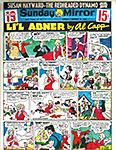 |
|||||||||||||||||||||||||||||||||
Opus 404 (June 1, 2020). To assist you in finding amusements during your sheltering-in-place, we’ve produced another whopper of an opus—lots of editorial cartoons to ponder, reviews of John Stanley and Little Lulu, a history of women illustrators and cartoonists, Dr. Seuss Disordered, Freud biography, books of gag cartoons, comicbooks Hellblazer and Butcher of Paris, plus a gallery of Trump faces. In order to assist you in wading through all this plethora, we’re listing Opus 404's contents below so you can pick and choose which items you want to spend time on. Here’s what’s here, by department, in order (the longest entries are marked with an asterisk*)—:
NOUS R US NCS To Thank Frontliners Cons Cancelled But Tampa Bay Goes On *Will Comics Survive? And It Will Continue for Months ... Mallard Fillmore’s New Artist Looney Tunes Is Back A Pause At Notre Dame Joke of the Week
FUNNYBOOK FAN FARE John Constantine, Hellblazer The Butcher of Paris
A Letter to My Congressman By Daryl Cagle
TRUMPERIES The Antics and Idiocies of the Buffoon-in-Chief Narcissistic Personality Disorder —And Some Editoons
EDITOONERY **A Long Selection of the Month’s Editorial Cartoons
NEWSPAPER COMICS PAGE VIGIL What’s Happenin’ in the Funnies Coronavirus Comedy
Letter from James Israel, Editor, Humor Times
GOSSIP & GARRULITIES Lynn Johnston’s Proustian Answers
ACCRETION OF INTENTION DEPARTMENT Just What the Doctor Disordered: Early Writings and Cartoons by Dr. Seuss Freud: An Illustrated Biography
BOOK MARQUEE Short Reviews Of—: Drawing the Right Way: A Conservative Cartoonist’s View of the World Have I Got a Cartoon For You! Book of Jewish Cartoons New Yorker Book of Political Cartoons
BOOK REVIEWS Long and Opinionated Reviews Of—: John Stanley: Giving Life to Little Lulu Drawn to Purpose: American Women Illustrators and Cartoonists
BOTTOM LINERS Single Panel Magazine Cartooning An RCH Cartoon Examined
RANCID RAVES GALLERY Frank Frazetta’s Marilyn Monroe
QUOTE OF THE MONTH If Not of A Lifetime “Goddamn it, you’ve got to be kind.”—Kurt Vonnegut
Our Motto: It takes all kinds. Live and let live. Wear glasses if you need ’em. But it’s hard to live by this axiom in the Age of Tea Baggers, so we’ve added another motto: Seven days without comics makes one weak. (You can’t have too many mottos.)
And in the same spirit, here’s—: Chatter matters, so let’s keep talking about comics.
And our customary reminder: don’t forget to activate the “Bathroom Button” by clicking on the “print friendly version” so you can print off a copy of just this installment for reading later, at your leisure while enthroned. Without further adieu, then, here we go—:
NOUS R US Some of All the News That Gives Us Fits
NATIONAL CARTOONISTS SOCIETY TO THANK FRONTLINERS A number of NCS cartoonists (Rick Kirkman, Jerry Scott, Stephan Pastis, Jeff Keane, Hilary B. Price, Dave Coverly and Bill Hinds to name a few) have been working out a creative way to say “Thank you” to all the generous volunteers and workers who are helping everyone during this crisis, and they’re asking for as many cartoonists as possible to hide 6 key symbols in their cartoons on Sunday, June 7. The iconic symbols are:
1. Mask (for medical workers and caregivers) 2. Steering wheel (for people who move our deliveries, supplies, mail etc.) 3. Shopping cart (for grocery workers) 4. Apple (for teachers) 5. Fork (for restaurants and essential businesses that have stayed open) 6. Microscope (for medical researchers)
Each of these is a symbol of gratitude for these dedicated people who have risked and sacrificed during this crisis. “Including the symbols in your drawings can be done obviously, deviously hidden, part of your gags, or integrated naturally—totally up to you,” saith those who have concocted the scheme. So come Sunday, June 7, be on the look-out in the comics section of your newspaper.
CONS CANCELLED By Rob Salkowitz at ICv2 The cancellation of most of this year’s biggest fan conventions has thrown the events industry into turmoil. Some of the industry’s biggest players have turned to various online alternatives to keep fans engaged and possibly derive a trickle of revenue while they wait for the greenlight from civil authorities – and, more importantly, public confidence – to recover. Right now, there are two main templates for doing online conventions: one that attempts to capture the big dollars of celebrity photo-ops through paid virtual meet-and-greets, and another that aims to simulate the communal fan experience through panels, creator appearances and retail participation. Because we’ve all become Zoom ninjas by necessity, the barriers to entry are relatively low for companies with connections to talent and marketing capabilities. The barriers to excellence, however, are pretty high. Perhaps the most intriguing virtual con announcement so far was from San Diego Comic-Con. Though the 2020 show has been cancelled, the organizers put out a teaser for Comic-Con@Home ("No lines! Pets welcome! Comfortable Seating!") and have been soliciting programming for online panels. SDCC Chief Marketing and Strategy Officer David Glanzer said they are still in the planning stages, but recommended fans check out the Comic-Con Museum site as they will be involved in the @Home effort as well.
BUT TAMPA BAY SOLDIERS ON From Heidi MacDonald at comicsbeat.com Tampa Bay Comic-Con has not been cancelled: the show will be held July 10-12, as reported on Facebook. But it will not be like the comic cons of the Before Time. After nearly two months of agonizing uncertainty, we have received confirmation from the Tampa Convention Center and Tampa Fire Marshal that TBCC 2020 will move forward with numerous health measures enacted by the venue and various levels of government, to keep attendees, exhibitors, guests, and staff as safe as possible. Here are some of the measures that will be enacted: 1) Temperature screenings will be mandatory for all occupants prior to entering Tampa Convention Center. Those exhibiting temperatures above a certain level will not be allowed into the convention. 2) Tampa Convention Center has increased cleaning and disinfection procedures in high-traffic areas such as elevators and escalators, handrails, benches, tables, handles, restrooms and more. 3) Hand sanitizing stations shall be set through the pre-function space and high traffic areas at entrance points. 4) Interior occupancy of the exhibit hall, ballrooms, and meeting rooms shall be strictly limited, with one-way ingress and one-way egress of all interior spaces. Comic-Con management adds: We’ve been waiting in limbo, not knowing and not having answers for quite a while. Now, we can resume guest announcements, along with exhibitor/artist alley invoicing, and guest bookings. We’re looking forward to another nerdy weekend at Tampa Bay Comic Convention, in less than two months! MacDonald takes up the thread—: Notably, the wearing of masks is not called for — if you should choose to go, honestly, it might not be a bad idea. However, it’s controversial locally. Even with all the safeguards, I’m guessing that a lot of people aren’t going to be eager to file into a convention center with hundreds of other people, even if they’re six feet away. It is known that poor ventilation increases the viral load, which increases the likelihood of infection. Surveys I’ve seen show a lot of people are hesitant to go to cons, even if they weren’t canceled.
WILL COMICS SURVIVE? The Web has gotten tangled up a little lately with missives about the future of the comicbook business. Given its present lassitude, will it come back? And if so, in what manifestation? The rest of this essay quotes John Jackson Miller, erstwhile CBG operative, who quoted Will Eisner on this topic: “I’ve seen this business die three times. I’m standing here at the edge of the cave waiting for the resurrection.” [And then Miller went on:] I once asked Denis Kitchen what Eisner was likely talking about when he said that in 1997 at the Comic-Con International, what were the three times it died? Kitchen speculated that Eisner meant (1) the birth of the Comics Code in 1954, (2) the collapse that followed in the late 1950s before Marvel "joined" the Silver Age, and (3) the underground comics crash in the 1970s. As Kitchen said of Will's quote: "It boiled down to 'Don't worry, kid. It'll be all right.'" It says something about the course of the business that we have to ask which three times he might have meant, because there have been several. Yet each time, we've emerged — almost always, by innovating our way out of it. [Another analyst—perhaps Miller or Kitchen; I’ve lost track a little of who is saying what—said the comics biz has died five times. In addition to those Kitchen mentioned, (4) the dubious appeal of a ten-cent magazine in the 1930s and (5) the financial collapse of DC and Marvel in the 1990s.—RCH] The challenge of the 1930s was simple viability. Would people buy this stuff? Early comic books were just reprints of comic strips, and right from the earliest circulation reports available in comics, for Famous Funnies, we see sales going down. So creators and their publishers answered with new material. And through Action and Detective and the others, we got a Golden Age. The challenge of the 1950s was a double whammy: the collapse in readership across all demographics due to the expanded availability of television, even as opportunistic politicians targeted comics over their content [when Fredric Wertham claimed comics caused juvenile delinquency]. Many publishers fled rather than fight. So creators and their publishers answered by making super-hero comics interesting and circling the wagons around the most reliable demographic, adolescent males. We got a Silver Age — and while it made narrower an audience that was once broader, we lived to fight another day. The challenge of the 1970s was in part a consequence of that narrowing, but also — somewhat similar to today — a result of an external shock: the 1973 OPEC oil embargo, and runaway inflation that made comic books so expensive, so quickly, that an already inefficient newsstand distribution system began to collapse. Marvel needed Star Wars to keep the doors open; DC had an implosion. This time, it was fans who came to the industry's rescue, setting themselves up as retailers and distributors and working with publishers to create the Direct Market, the most successful model in all of magazine publishing. The challenge of the 1990s came when excesses in that model created a credit bubble, ballooning the number of comics shops far beyond what the audience could support — and the concomitant glut of more low-quality, gimmick-laden material than any store could shelve. By the time that bubble burst into the Distribution Wars, the crisis became where new customers would come from, as the newsstand had by then ceased to function as a channel for new readers. Innovation was again the way out, with the graphic novel allowing creators and publishers to repurpose content from periodicals in a way that would be profitable not just for comics retailers, but attractive to mainstream booksellers as well. Within 20 years, book channel dollar sales were nearly as large as the Direct Market. We managed to make it through the 2010s without our regularly scheduled collapse; 2017 was part of a six-quarter stretch where the quality of releases just couldn't keep up with the blistering sales pace of the mid 2010s, but the comics shop market has been recovering from that, and indeed the decade was up 8% in that market, even after being adjusted for inflation. 2019 was an up year in the Direct Market, and a colossal one in the book trade. As it turns out, the great test of the 2010s appears to have shown up just a bit late [with the present crisis].
*****
But in looking at any range of futures, we need to stick to facts. And there is one particular one that's heartening: Covid-19 has struck individuals and the economy — but the comics market was healthy before this. The book channel was doing crazily well — and the winter in the Direct Market was pretty good, as winters go. Conventions were packed in multiple cities the last weekend in February, including the one I was at in Richmond (where my bookseller sold out of my books by 1 p.m. Saturday). That's in February, smack in the middle of the quarter when the comics industry used to go to sleep. The market wants to go back to that, almost as if it’s a living thing. It is a living thing — a machine made up of all of us. The obstacle is a virus, a plague; confronting it while protecting the vulnerable is the business of all, now. For our actual business, comics, it’s like we were in a car accident. A multi-car pile-up in the ice, where things are still moving and it's still too dangerous to help. We need time to judge the damage, time to pull everything apart and take stock, time to heal. But there’s no need to reinvent something that wasn’t broken. The market was healthy before this. What’s to become of us? That depends on doctors and the decisions of others who, hopefully, will be drawing on wise advice. But once our fate’s more fully in our hands again? I wouldn't bet against us. Because as Will Eisner— such a great friend to comics shops that the retail industry's awards program was named for him — said, we've beaten the odds before. He's somewhere out there now, waiting to see what we do.
*****
Naturally, I, the Happy Harv himself, must throw in my two-bits worth. The comics industry, like most such enterprises, depends for its continued health upon a fundamental truth: people—cartoonists, writers, artists, publishers—want to produce comics; people want to read them. The problem with the just-exploded economic model is that it depended upon one comics distributor, Diamond. That worked fine. As long as Diamond was okay; when it wasn’t, it all collapsed. So maybe we should revive the distribution model we had when there were several distributors. The collapse of one wouldn’t mean the death of the entire enterprise. AND—it was a mistake to give up newsstand sales. To make direct market comicbook shops the sole means of selling is the same mistake we made with distribution. The fate of the industry should not depend upon any one, single factor. So revive the newsstand sales (i.e., Wallmart, K-Mart, etc.) John Jackson Miller said recently in his essay on this topic: “I wouldn't bet against us. Because as Will Eisner— such a great friend to comics shops that the retail industry's awards program was named for him — said, we've beaten the odds before. He's somewhere out there now, waiting to see what we do.”
AND IT WILL CONTINUE FOR MONTHS ... ... perhaps years. Here at Rancid Raves, we don’t expect much relief from the nation-wide lock-down any time soon. It’ll take a couple years for a vaccine to be developed and found effective. During that time, we’ll be going out less frequently. No more ordered lock-down but the experience of the last couple months will persist, and we’ll stay at home more. The testing that everyone seems to think will effectively end the pandemic won’t be taking place very soon. Time reported four roadblocks to testing goals. We don’t have enough supplies such as swabs and vials to take samples. The workforce needed to process the samples is almost non-existent: only certified technologists are trained to do the work. The chemicals necessary for extracting the virus’s genetic material are in short supply. And the machinery for processing is also virtually non-existant. And in all the hype about testing, a crucial fact is almost never mentioned. People need to be tested at least once every two weeks. So it’s not as if one test will do the trick. Testing must become an on-going effort, week after week after week. For everyone. So sit back, relax and learn a new way of daily living. But as the days go by, we’ll be less and less concerned. In short, we’ll adapt, we’ll learn to live with it. We’ll endure some changes, though. Hand shakes will fade away. Restaurants won’t have salad bars or buffets anymore. Touch screens and anything that requires touching to operate—and that other people will also touch (elevator buttons?)—will disappear. Restaurant menus? Disposable after one use. And so it goes.
MALLARD FILLMORE’S NEW DRAWER We
mentioned lately that Bruce Tinsley’s Mallard Fillmore comic strip
is being drawn by someone else—Loren Fishman, to be precise. As you can
see in the samples posted hereabouts, his line is thin and inflexible;
Tinsley’s line flexed and was sometimes outright bold. And Fishman’s strips
seemed overwhelmed with verbiage. Look around about and you’ll see samples of
the Fishman Mallard and the Tinsley Mallard. Fishman was interviewed April 8 by King Features’ comicskingdom.com, and we’re quoting from it herewith—: Fishman started cartooning in 2009, when he was a graduate student studying music. “I loved my field but strongly disliked many aspects of academia,” he said, “— including the insistence on writing long-winded, jargony papers. I found myself constantly thinking: ‘This could easily be explained with two sentences and a picture, why must I ramble on for 20 pages?’ So I think my first attempts at cartooning were escapes from what I found to be a stifling and impractical way of communicating. It was either that, or the delayed onset effects of growing up with a different Far Side Gallery in each bathroom of my house.” In his day job, Fishman is a classical pianist and piano teacher, and his first cartoons were “pretty esoteric musings about classical music and musicians. I originally developed my cartoon panel, Humoresque, for various music and piano magazines. Once I got my feet in the water and became engrossed with cartooning in general, the panel quickly expanded into cartoons about many aspects of daily life as well as social commentary.” Growing up, his comics diet was almost exclusively The Far Side, Calvin and Hobbes, and Matt Groening’s Life in Hell. Right now, he says, he never misses Zits, Sherman’s Lagoon, F-minus, and Bizarro. Fishman (no surprise) is a rampant conservative. He cares deeply about many of the same issues that Mallard does. “For example, I’m extremely troubled by the preponderance of ideology creeping its way into – and in some cases completely compromising – institutions that are meant to simply inform or educate us. So I think Mallard and I are both hyper-aware of being jerked around by the activism and political agendas of many media and academic institutions, and we have no patience for it. “An aversion to political correctness and the suppression of free speech (especially as it manifests itself on the political left in our current moment) is also something that Mallard and I share. I think most people involved in creative endeavors are very sensitive to the need for free expression, which seems to always be under attack on a lot of social and political fronts.” Fishman continued: “I also share a lot of Mallard’s seemingly minor pet peeves, like the overuse or grammatical misuse of words in journalism and pop-culture (i.e. ‘refute’ vs. ‘rebut’ or the abuse of apostrophe’s). Some of my favorite strips are the ones where Mallard uses his ‘teacher voice’ to explain how to use a certain word or phrase correctly. I know these premises may seem silly, but I find them to be really important social commentary. Mallard understands that accurate language is how we articulate truth, and when people start messing with language for political or ideological reasons, the truth becomes undefinable...and then we’re all in big trouble. “I’ve enjoyed talking about the presidential debates and primary season. It’s nice to have an outlet for the anger and frustration that consumes me when watching our country’s political process being reduced to petty bickering and conflict-driven spectacle.” The interviewer, identified only as Edgar, doesn’t say whether Fishman writes the strip as well as drawing it, but I assume, from the foregoing, that Fishman is doing both. In the setup for the interview, Edgar says Fishman is filling Tinsley’s shoes “while he’s away,” so I assume that Tinsley’s absence is only temporary and that he’ll be back eventually.
LOONEY TUNES IS BACK By Doug Trumbore at collider.com Most if not all modern cartoon comedy series today can trace their roots back to Looney Tunes, and Warner Bros Animation is bringing out a new series, starring all the cherished characters of yore. The news series echoes the high production value and process of the original Looney Tunes theatrical shorts with a cartoonist-driven approach to storytelling. Arriving on the HBO Max streaming service on May 27th, the new toons will consist of 80 eleven-minute episodes, each comprised of animated shorts that vary in length and include adapted storylines for today’s audiences. Fans can also look forward to holiday-themed specials. I had a chance to get an early look at the first three episodes (totaling six story segments and three interstitial gags) and I’m thrilled to say that Looney Tunes Cartoons is a hilarious throwback that hits all the right beats and never misses a step.
A PAUSE AT NOTRE DAME It has been a year since a massive fire at the Notre Dame Cathedral in Paris toppled the iconic building's spire and endangered its structural integrity. The cultural tragedy inspired a worldwide influx of donations to rebuild and reinforce the 850-year-old building, reports CNN, but those efforts are now on hold due to the pandemic. Work
at the Paris site has been suspended since March 16, and despite the months of
recovery work already undertaken, the full extent of damage still isn't clear.
An Army general overseeing the project told the French Senate in And what, exactly, is this “structural integrity” everyone keeps talking about? I don’t know for sure, but what I do know for sure is that without a roof the walls tend to lean in. And if they lean too far, they’ll collapse. Then the Cathedral is done for. Why do the walls lean in? Because the flying buttresses that surround the building are pushing inward, that’s their intended function. By pushing inward, they balance the downward and outward thrust of the weight of the roof. But the roof is gone, so there’s no downward and outward thrust for the flying buttresses to push against. Instead, to the extent that they are pushing, they are leaning inward towards collapse.
JOKE OF THE WEEK Trump won’t wear a mask. His aides have invented a reason for this dereliction. It’s appropriately Trumpian. He’s convinced that the American Peepul don’t want to see their President wearing mask. Maybe they do: maybe they’re actually waiting for their leader to set an example in these pandemic times. But, no; the aides say the America Peepul don’t want to see their leader in a mask. That’s what the aides say. But they’re wrong. The real reason that the Trumpet doesn’t wear a mask is because he thinks wearing a mask makes him look silly. And he doesn’t want to look silly. Leader of the Free World and all that. Dignity is required. Funny, though, that he should be all that concerned about looking silly. It’s amusing—hilarious, actually—that a man with the most elaborate, frizzed-up— monumentally silly— comb-over in history worries about looking silly. His hair-do alone, without any other consideration (of which there are several), has made him an international laughing stock.
Fascinating Footnit. Much of the news retailed in the foregoing segment is culled from articles indexed at https://www.facebook.com/comicsresearchbibliography/, and eventually compiled into the Comics Research Bibliography, by Michael Rhode, who covers comic books, comic strips, animation, caricature, cartoons, bandes dessinees and related topics. It also provides links to numerous other sites that delve deeply into cartooning topics. For even more comics news, consult these three other sites: Mark Evanier’s povonline.com, Alan Gardner’s DailyCartoonist.com (now operated without Gardner by AndrewsMcMeel, D.D. Degg, editor); and Michael Cavna at voices.washingtonpost.com./comic-riffs . For delving into the history of our beloved medium, you can’t go wrong by visiting Allan Holtz’s strippersguide.blogspot.com, where Allan regularly posts rare findings from his forays into the vast reaches of newspaper microfilm files hither and yon.
FURTHER ADO We learn from history that we do not learn from history.—Georg W.F. Hegel
FUNNYBOOK FAN FARE Four-color Frolics
DC’s SPOOKY STREETWISE MAGICIAN and sometime occult detective has been revived in John Constantine, Hellblazer, the first issue of which (dated January 2020) arrived at the end of 2019, perhaps in November. The original Hellblazer series ran from 1988 until 2013, Nos.1-300, a respectable run in anyone’s universe and the longest-running title in the Vertigo imprint. Then tricky John was revived last fall in the Sandman Universe, and I have four issues in hand, Nos.1-2 and 4-5. Upon hearing some years ago that the character starred in a horror title and having myself no interest in horror or sf spookiness, I never picked up any of the books. Why I suddenly decided to look into the current run I can’t say. Something about the cover art, I suppose. In any event, I quickly found myself in way over my head: this character was simply beyond my understanding. Who was he and why did he behave in the wholly unmotivated manner that characterizes whatever he does? I eventually consulted St. Wikipedia and found this: “John Constantine, the main character of Hellblazer, was portrayed as a kind of confidence man and occult detective who did morally questionable things, arguably for the greater good. He usually triumphed through guile, deceit, and misdirection, but often made more enemies in the process than he defeated. Indeed, it was a common theme in the book that Constantine was unable to effect any lasting change or enjoy unequivocal victories. While sometimes striving for the good of mankind, Constantine was often manipulative and a dangerous person to have as a friend, as the lives and souls of those around him became perilously involved in his misadventures. He took pains to protect himself from direct attacks, but his friends and relatives were often endangered in order to strike at him. The spirits of deceased friends haunted him, individually or as an entourage of ghosts.” That helps a little. But I didn’t consult St. Wikipedia until after I’d tackled all four of the books in hand. While the paragraph explains Constantine’s seemingly pointless behavior in Nos.1-2 and 4-5, we’re still left with the pointless behavior that is complicated by the characters’ insistence on speaking a variety of British slang. Or maybe it’s Irish? No matter. It’s all nonsense. Throughout the first issue, Constantine seems about to join a gang, and the gang seems to have some sort of initiation ritual, which he is bent on ignoring. Or not. It’s that kind of story. In No.2, Noah the mute black kid shows up, and Constantine seems to want to spare him from the torments he might be subjected to at others’ hands. Strangely, a two-page sequence with Constantine next to a Sikh cop at the urinal is the most sensible portion of the book. It ends when Constantine encounters a bearded old man digging in a trash can to whom Constantine quotes Blake. Then Noah offers to fix a dead guy who’s been disemboweled. All of this is drawn by Aaron Campbell, whose dark and gritty manner obscures more than it illustrates, adding to my confusion. It’s ugly stuff, and its black, black, black. I don’t have No.3, and it may be in that issue that Campbell surrenders to a new artist, Matias Bergara whose clear and unshadowed pictures are a bright and sunny relief from dark and gritty. In No.4, Constantine is joined by a bearded, moustached and bunned fan, Tommy Willowtree, who spares no effort in trying to please his wholly indifferent idol, who spends most of his time smoking or lighting a cigarette. They encounter an evil menacing giant globule creature which Constantine vanquishes by flinging arcane language at it. Then they retire to a nearby pub, Tommy meets the bouncer, a woman named Natalie, whom Constantine befriended in the first issue. Our cosmic duo then get drunk. In the fifth issue, Tommy sets about arranging objects on the ground, seeking a magical configuration while Constantine goes off to find Natalie. When he returns, he finds Tommy nailed to a wall in the image of a crucifixion. Constantine rescues him, bandages his hands, and, to Tommy’s immense satisfaction, appoints him Paladin in his mystic star chamber to act as his hand and eye “to make unceasing strife upon the forces of creeping evil and to serve ... with honor and might.” (Or “honour,” just to preserve the Brit aura.) They are now a team. Simon Spurrier writes all this stuff. His objective seems to be to keep the ball bouncing and the melody playing without having a plot in mind. He succeeds. And now that he’s convinced me, I’ll probably look for the next issue to see if Bergara draws it; if he does, I’ll buy it. Meanwhile, hereabouts are some sample pages.
The Butcher of Paris, Nos.1-4 (Dark Horse), is attractively rendered by Dean Kotz in what we might dub a sloppy Caniff style—sketchy linework splashed with shadows and other modulating solid blacks. It’s another mass or serial murder tale in which dismembered bodies turn up in the Seine, sometimes more parts than actual bodies. Stephanie Phillips’ tale begins during the German occupation of the City of Lights, but by No.4, Paris has been liberated by the French. The detectives attempting to find the serial killer are Georges-Victor Massau and his son Bernard. Massau, who was involved in the Landru case in World War I (which will doubtless show up again: he’s haunted by it), thinks the culprit is Doctor Marcel Petiot, and he tries to find him. He begins by questioning Mrs. Petiot. A German Gestapo officer, Robert Jodkum, also questions her—to no avail. Massau, questioning with kindness, gets more out of her but nothing useful. After the questioning, Massau is outside the questioning room when he is handed a note that proclaims the innocence of Petiot. Suddenly, Massau goes after the man who handed him the note, thinking it is Petiot. But the man eludes him. In No.4, the Germans have officially fled Paris, but Jodkum has been captured by the Resistance, and when he is questioned about any collaborators he knows, he names Massau—probably out of spite since the two quarreled briefly over the questioning of Mrs. Petiot. Then Jodkum’s questioner shots and kills him. Massau then falls into the hands of the Resistance, protesting his innocence. The issue closes with a sequence in an old mansion. A young woman is inspecting the ornate furnishings of the place, when a door opens, and a man appears, offering to help her find Etienne. As she goes into the room he gestures towards, she passes by him, and we see his face: it is the face of the man who gave the note to Massau, and we are led to believe it is Petiot, the dismembering murderer. Is the young woman his next victim? That, and Kotz’s artwork, is enough to bring me back. Nearby, samples of the artwork.
A LETTER TO MY CONGRESSMAN About the Plight of American Journalism and Editoonery Here is a letter Daryl Cagle wrote to his congressman describing the grim situation facing Cagle Cartoons, an editorial cartoon syndicate, and the troubled editorial cartooning profession not to mention the newspaper biz itself. You can help save Cagle.com by visiting Cagle.com/heroes.
May 12, 2020 Congressman Salud Carbajal District Office Santa Barbara, CA
Dear Congressman Carbajal, … I run a constituent small business in Montecito, Cagle Cartoons, Inc., that syndicates editorial cartoons and columnists. About half of America’s daily, paid-circulation newspapers subscribe to our service that you can see at CagleCartoons.com. Journalism has been in decline for years, but the newspaper industry now faces sudden extinction with the pandemic as newspaper advertising revenue has crashed. A large percentage of our subscribing newspapers have simply stopped paying their bills; a good example is our local Santa Barbara News-Press that has run our cartoons and columns on their editorial page on most days for over 14 years – they are now seven months behind in their payments. Industry experts predict that as many as two thirds of newspapers may not survive the pandemic. We saw the stock price of Gannett, the largest newspaper chain, drop from over $10/share to under a dollar in a matter of months (USA Today runs our cartoons). The loss of newspapers would also sink the editorial cartooning profession and our small business along with it. Our Web site, Cagle.com, is the face of the editorial cartooning profession to the world, and we suffer for that as press freedoms around the world are in decline. Humorless despots hate seeing themselves in our cartoons, and our sites are targets of sophisticated hacker attacks that clearly come from state actors. Although America benefits by demonstrating our values around the world through journalism and editorial cartoons, the US government does little or nothing to support editorial cartoonists and other journalists who suffer from foreign attacks. We received an SBA PPP loan in the amount of $10,600.00; we applied for a very much larger loan based on our expenses which mainly consist of royalties to our artists and our tech expenses that are bloated by defenses against foreign hacker attacks. Our small business is unusual in that we have only two employees, our income from newspapers is broadly distributed to our contributors and the loan amount was not based on our actual expenses; it was based only on the salaries of our two employees, me and my bookkeeper. We have over 75 great cartoonists and columnists, who depend on us, who were ignored in the process because their income is reported on 1099s. The PPP program was not designed for us. For many years I traveled around the world giving lectures through the US State Department Speaker Program. In nations without press freedoms, audiences were shocked to see how American cartoonists were free to criticize their government. Well more than half of the world’s population lives in countries where cartoonists are not allowed to draw their nation’s leader. The Speaker Program was effective in spreading our values and promoting press freedom. American editorial cartoonists are seen as stars around the world where we are well respected, like American astronauts, basketball players and jazz musicians. These effective State Department lecture programs have stopped featuring American editorial cartoonists during the Trump administration. The impending collapse of journalism is a national tragedy that threatens our democracy. The newspaper industry has been lobbying in Washington seeking government support that is unlikely to happen during the Trump administration which has shown hostility to press criticism – criticism that is strongest and most visible among editorial cartoonists. If Democrats win the White House, I fear that any support for journalism may not include small syndicates and press services because our businesses are unusual. We are likely to be overlooked, as we were with the PPP program. When legislators think of journalists they don’t think of editorial cartoonists. Editorial cartoonists are journalists. We are important. Don’t forget us. Truly, Daryl Cagle, Editorial Cartoonist, President Cagle Cartoons, Inc. Syndicate: CagleCartoons.com Site: Cagle.com Store: PoliticalCartoons.com
QUOTES & MOTS On faith—: Skepticism is the highest of duties, and blind faith the one unpardonable sin.—T.H. Huxley We have not lost faith, but we have transferred it from God to the medical profession.—George Bernard Shaw Isn’t it enough to see that a garden is beautiful without having to believe that there are fairies at the bottom of it too?—Douglas Adams
TRUMPERIES The Antics and Idiocies of the Buffoon-in-Chief
Does Trump Suffer from Narcissistic Personality Disorder? Nigel Barber at the Human Beast (or, perhaps, he is the human beast) thinks the evidence is pretty persuasive. Here’s Barber—: Does Trump conform to the clinical pattern? Professional psychiatrists and psychotherapists are loath to go on record saying that Trump has a psychiatric disorder on the premise that one cannot give a diagnosis without an office visit and most narcissists are quite unlikely to recognize that they have a problem and to schedule an appointment. Fortunately, the DSM is written so clearly, and so simply, that the diagnosis is transparent. According to DSM-5, individuals with NPD have most (at least five) or all of the symptoms listed below (generally without commensurate qualities or accomplishments). ◆ Grandiosity with expectations of superior treatment by others. ◆ Fixated on fantasies of power, success, intelligence, attractiveness, etc. ◆ Self-perception of being unique, superior, and associated with high-status people and institutions. ◆ Needing constant admiration from others. ◆ Sense of entitlement to special treatment and to obedience from others. ◆ Exploitative of others to achieve personal gain. ◆ Unwilling to empathize with others' feelings, wishes, or needs. ◆ Intensely jealous of others and the belief that others are equally jealous of them. ◆ Pompous and arrogant demeanor. Among other criteria, the symptoms must be severe enough to impair the individual's ability to develop meaningful relationships with others and to reduce an individual's ability to function at work. As far as the first of these is concerned, Trump evidently has no close personal friends. Work function is also an issue. The ghost author of Trump’s Art of the Deal, Tony Schwartz, found it impossible to interview Trump who quickly became bored. He gleaned most of the necessary information by being a fly on the wall in Trump's office. Some of the DSM criteria are less relevant to Trump given his birth to money and life as a plutocrat that guarantees contact with high-status persons and being fawned over as a VIP. For those that are clearly relevant, he checks out on all symptoms, it seems. According to DSM criteria, Donald Trump suffers from narcissistic personality disorder.
Can a Narcissist Function as a U.S. President? It is, perhaps, no surprise that widely held impressions about Trump's narcissism are corroborated by the DSM criteria. The key question to ask is whether, having come so far despite his psychiatric disorder, Trump or any other narcissistic personality can communicate well enough to be an effective leader of the free world. There have been many narcissistic heads of state before but the clearest examples, such as Fidel Castro, Saddam Hussein, and Hugo Chavez, have been dictators. Narcissists are difficult to deal with, whether as friends or as politicians. They do not feel the need to build consensus, which is why most are screened out by democratic systems of government.
NOW THAT WE’VE SETTLED THAT, let’s take a look at some editoons that focus on the Trumpet’s personality, the actual purpose of this department, beginning, as we usually do, with his appearance on magazine covers that lately the Trumpet has graced with his visage and his fizzy yellow hair.
Not cartoons you say? Whenever Trump is on a cover, it’s a cartoon cover: any depiction of our Prez reveals the clown in him even though he doesn’t, himself, realize that any picture of him is a cartoon. And to make that point, I’ve posted a Rogues Galley of Trumpix right ’chere at the elbow of your eye.
Every expression is a comedic delight. But to return to the covers, the expression—one of his self-satisfied smirks—on The Week’s cover is a dazzler. The satiric point, however, is that no one in the Trump administration is holding on to the steering wheel. And Barry Blitt, fresh off his Pulitzer win, adds to his gallery at The New Yorker with a picture of the Trumpet performing heart surgery. Well, if he can make medical judgements about cures for coronavirus, surely he can do something as simple as heart surgery. But he has help: left to right, his son-in-law Jared Kushner, Dr. Anthony Fauci, and Attorney General William Barr. Time’s cover portrait, a simplified arrangement of colors without facial details, echoes a few previous appearances on Time, two of which I’ve posted next to the large pic, which depicts Trump wearing a face mask in public! Wow. Another first for Time. The face mask is the American flag, by which I gather the artist signals that Trump depends upon our reverence for the flag to protect him from Covid-19 as well as wholesale ridicule. But this is serious stuff. Covid-19 deaths in the U.S. passed 100,000 last week (as of May 27 when I’m writing this); worldwide, it’s over 350,000. That means the United States is responsible for 28% of the deaths on the planet. And a good percentage of those deaths are the result of Trump’s failure to act promptly or effectively. He’s killing us. You can make the case that Trump’s failure to act effectively was actually his attempt to prevent panic by virtually ignoring the danger. And I suppose that’s true to some degree. But that doesn’t excuse other aspects of his failure. Nor does it excuse his fostering the argument against face masks that is being aired in Trumpian circles. CNN reports that Trump’s refusing to wear a face mask defies his own government's advice on face coverings and has thus “turned into the era's latest ideologically motivated assault on science and civility. His noncompliance is a symbol of his refusal to adopt the customary codes of presidential behavior during a crisis and his habit of turning even a dire national moment to personal political advantage. The episode is unfolding at a particularly intense moment of the President's cycle of distortion and distraction ... as conservative commentators brand the practice as elite liberal fear-mongering.” The
first Trumperies cartoon was done by Clay Bennett as we can see on our
next display. The second cartoon on this page is an edition of Tom the Dancing Bug in which Ruben Bolling shows Franklin D. Roosevelt reacting to the Japanese bombing of Pearl Harbor in the way that the Trumpet has reacted to the coronavirus. It dramatizes how absolutely stupid Trump’s response was. In
our next visual aid, we start with Michael de Adder’s picture of the
Trumpet mooning science, thereby demonstrating his complete scorn for science
and facts, which may be responsible for Trump’s having dismissed “rumors” of
the spread of a deadly virus in January when he presumably first heard about
it. Next, Darrin Bell offers an image of bumper stickers, one of which contradicts the other—typical Trumpery. Finally, Pat Bagley’s image of Trump in a graveyard yelling at the death count in America reveals the true Trumpet: all he is concerned about is how he’ll look. And that’s it, kimo sabe, for Trumperies this time. Next, we’ll take up the serious hilarities being perpetuated by the nation’s editoonists.
HOW TO COPE WITH STRESS I add rubber bands to our workplace rubber band ball. I paint the walls of my home in my mind. I close my office door and sing. I have a jar of gummy bears at work. I pretend they’re people who stress me out and bite their heads off. I pop bubble wrap. EDITOONERY The Mock in Democracy THE
PURPOSE OF THIS DEPARTMENT is to linger over editoons long enough to appreciate
how editorial cartoonists deploy imagery to make their arguments. We start this
time with a cartoon by the Edmonton Journal’s Edd Uluschak, who
is simply illustrating in the name of one of those pop-up quasi-fictional
groups, Cartoonists Against Covid, by offering an image of a crusading knight
(cartoonist) on horseback attacking the specter of Covid-19 with a drawing
pen. Matt Wuerker is next with an image of Trump’s Council to Reopen America (which includes his genius son-in-law) weighing an “acceptable” number of deaths against the economic benefits of having a functioning society, an operation that ought to remind us of the alleged Obama “death panels,” much opposed at the time by the Republicons who now accept their version of the same thing. And then we see Tom Toles’ picture of the genius son-in-law, Jared Kushner, reading a bedtime story about “the great coronavirus Success Story” to Uncle Sam. Kushner’s assessment of the state of the crippled union and the Trump administration’s heroic role in saving it did, indeed, read like a fairytale bedtime story with its “happily ever after” conclusion. But Kushner, from whom we’ve actually heard very little these past three years, is an impressively articulate intelligence as revealed by an interview with him published recently in Time. Asked why the U.S. has been so slow in getting to a higher level of testing for Covid-19, Kushner said: “Slow is a relative term, right? There’s never been a challenge like this before. [The standard Trumpian response to that question.] We have a lot of people in the country, and like I find with solving any problem, you need to do a lot of the steps sequentially. ...” And that idea strikes me as being “new,” something fresh on the political landscape of the pandemic. We must solve the problem by taking steps sequentially. First, we had to develop a viable test, then ... Most of Kushner’s responses in the interview are, ultimately, a predictable defense of Trump actions and policies, but they are delivered in a surprisingly articulate and thoughtful manner. Still, as Uncle Sam in Toles’ cartoon reminds us, Kushner’s “triumph” in the Mideast was wholly one-sided: it gave Israel everything it wanted while depriving the Palestinians of everything they needed. If anything, it demonstrated the folly of putting a Jew in charge of contriving a solution to the problem. A Palestinian would presumably have arranged for the opposite, producing an equally unsatisfactory outcome. Neither Jew nor Palestinian could arrange a solution acceptable to the other. In
our next visual aid, Jen Sorensen assembles a montage of four cartoons,
three of which are masquerading as insurance policies, the names of which
promise much but the explanations quickly reveal how little the insurance does.
Taken together, it’s an indictment of various aspects of the Trump
administration’s actions, culminating in the disaster of the last panel. Dave Granlund offers the image of a sinking ship to represent the Trump response to encountering a iceberg tagged Covid-19. Lifeboats “on order” don’t help much. Another of the Trump policies, to supply ventilators only to governors who praise the Trumpet, is ridiculed in the image from John Darkow, which aptly depicts governors kissing Trump’s ass for ventilators. And then Boris (aka Jacques Goldstyn) at the Montreal Gazette shows us a face mask (i.e., a gag) that will save thousands of lives. On
the next display, David Horsey revisits the issue of the Trumpet’s slow
response to the coronavirus. Rob Rogers continues in the same vein with an image of the Trumpet as the coronavirus itself, inscribed with his faults—lies, incompetence, ego, anti-science, xenophobia—which the observant press correctly observes are still visible despite Trump’s claim to being invisible. Walt Handelsman at the lower left takes a shot at Trump’s dubious relationship with the nation’s governors, illustrating exactly why Trump turned over to the states the war against the invisible enemy. First, as a matter of sheer chronology, Trump claimed absolute authority to order anything he so desired, thereby projecting himself into leadership; then he quickly abandoned that role by saying that governors should do everything, saying, “I don’t take responsibility at all.”
AS WE HAVE POINTED OUT BEFORE, this policy is the posture of the coward: if the governors fail, Trump cannot be blamed; if they succeed, he can claim brilliance in giving the job to them. Either way, Trump escapes culpability. It’s a neat trick. But it leads to Trumpet uttering nonsense statements like the one he’s employed here—while also mentioning that he had earlier mistakenly told everyone “that thing” was “nothing.” Trump’s failure to assume responsibility at the national level forced states to go looking for ventilators and other Personnel Protective Equipment individually, resulting in bidding wars for scarce PPE. Had the Trump administration assumed its rightful role—the role for which a federal government was created in 1978 (replacing the weak, non-existent federal government of our present Constitution’s predecessor, the Articles of Confederation, which was rightly perceived as a failure for the lack of a national power)—the cost that states incurred would have been much less and borne proportionally among the states. By some reasoning (hinted at in the preceeding paragraph) Trump’s refusal to assume a national role was unconstitutional and therefore an impeachable offense. But let’s not go there. This time. Instead, we’ll simply make a final allusion to Trump’s widely recognized personality as a bully. And bullies are always cowards. Our
next exhibit explores the Trumpet’s next face-saving maneuver: blame everyone
else. Don’t know who drew the big panel on the left, but it deftly captures the
Trumpet’s philosophy and practice. But in this specific instance, he’s blaming
the dead for his reputation slipping away. Then Dave Whamond is back with a wonderfully accurate picture of Trump’s claim that Broncho Bama committed crimes. Asked to be specific, Trump couldn’t be. Now, let’s take a break for all this heavy-duty cartooning. AND TAKE A LOOK at some simple, straight-forward gag cartoons. In the best of this breed, the pictures and the words are interdependent: the pictures don’t make sense without the words, and the words take on a different meaning when coupled to the pictures. Neither words nor pictures make the same sense separately without the other than they do together. And
that’s what we have here. Take, f’instance, “the Elderly Testament.” I love the notion of “the Elderly Testament,” but I’m not sure how the visual is connected to the verbal. In the Elderly Testament, God is inside the Earth and his thunderbolts stick up from below? Probably. And Randy Glasbergen’s cartoon violates my sacred principle, but I love his big-nosed people. He draws the best big noses around. So I always look for a way to include one of his cartoons whenever possible. That’s enough break. Back to serious business.
TRUMP’S
SCATTER-GUN campaign-style press conferences—which, for a while, he gave
daily—is the topic of the next two editoons. Next around the clock, Michael Lukovich creates an image of the press conferences that adequately convey their truth: everyone except the Trumpet is covering his/her face in embarrassment at the outrageousness of his utterances. Luckovich returns at the lower right, showing the classic Uncle Sam image, thanking the frontline workers—doctors, nurses—for their heroic efforts to save lives. The image, originated by illustrator James Montgomery Flagg in response to the recruiting needs of the First World War, gives the struggle of the health care personnel an appropriately wartime gloss. Then we have Chris Britt, who in a crowded image of a snake-oil salesman at work, ridicules Trump’s claim for the anti-Covid prowess of hydroxychloroquine as just another kind of snake oil (which can also cure baldness and bad breath as well as the “evil virus”). The
lockdown (or, self-isolation or sequester-in place or standing-in-the-corner)
is our next subject, and David Fitzsimmons gets us started with a nifty
image of the six-foot separation aspect of the enterprise—a couple avoiding
hand-holding or hand-touching but touching toes—with shoes on. Next John Darkow produces a detailed and finely shaded portrait of a house, one of whose occupants is asking the question that everyone is now hearing or asking. Either of the answers describes how much our realm of self-actualization has shrunk as we seek to protect ourselves and our neighbors. And then in Keith Knight’s K Chronicles, Keef uses the opportunity afforded him by the pandemic to pose some other, searching questions in comic strip format, which permits him to pile up his indictment—until he gets, at last, to the extreme threat, licking faces. “Licking,” as I take it, is a way of transmitting the Covid-19. Drew
Sheneman starts us off in our next visual aid with an intricately contrived
image that cuts in more than one direction. The government’s effort to keep the economy running by issuing checks to people is ridiculed by Joe Heller at the upper right. Each of the recipients utters the talking point that has assaulted his political opponent for years. But it’s just talk, we realize. Then Mike Smith shows us just how trivial that $1,200 check is when confronted by the mountain of bills it’s supposed to pay (but, of course, isn’t enough to manage). And then John Darkow returns at the lower left with a visual metaphor showing just how the relief money is being spent. In the life raft that is saving the occupants of the good ship Economy is a fat man labeled “large businesses” wearing a dress and a large, decorative hat because he’s impersonating a woman: he knows women and children are always first to be rescued from a sinking ship, and he wants to be first. And we know, because he’s in the life boat, that his disguise has been successful: large businesses got most of the funding approved by Congress. Nice touch: the teddy bear falling out of the boat means that the fat impersonator has also displaced the children who are supposed to be among the first. If
you want to know what a man with his head up his ass looks like, consult Walt
Handelsman, whose picture in the next exhibit shows us what
“sheltering-in-place” means to the Trumpet. And then, with sheltering-in-place only a few weeks old, everyone started talking about “coming out” in order to revive a stagnating economy. Mike Luckovich’s metaphor for that situation suggests what will happen in Georgia (where he lives and cartoons for the Atlanta Journal-Constitution) if people venture outside the safety of their houses. They will become dinner for the vultures, who are perched in the tree simply to suggest that it isn’t safe to come out yet (i.e., the birds don’t represent anything else but danger). At the lower right, we have a sample of The Nation’s OppArt feature wherein an editoon is posted weekly on the magazine’s website. This one, by Hilary Allison, provides a visual metaphor for those living in the bubble of sheltering-in-place who have wearied of their confinement and want to break out. To complete the message: when the fish breaks out, it will have destroyed the environment that his chums are living in. At the lower left, Dave Whamond’s image gives us the typical Trumpet, who isn’t likely to do anyone a favor without claiming one in return. In this case, if he provides federal relief funding to Democrat states, he wants them to impose conditions on sanctuary cities—doubtless to remove the sanctuary parts.
OUR
NEXT VISUAL AID may have been committed by Ward Sutton; I can’t read the
signature, which I think is in the last panel. In any event, it’s a full-page
comic strip format without being a comic strip because panels do not follow in
sequence. Instead, each panel is a stand-alone cartoon; but each of the
cartoons develops the same theme, constructing funny new words in the universe
of Covid-19. The
following exhibit includes a giant-size cartoon by Dave Horsey. Entitled
“Voting Rights Republican Style,” Horsey’s drawing presents an obstacle course
which leads, eventually—if you can surmount the obstacles—to a polling booth at
the far end of the ridge. Trump’s nightmare is one of his own making: it’s not fraud he’s fearful of—it’s losing the election. In his imagination, the more people who vote, the less his chance of winning. This so-called reasoning is of the same sort on display when he claimed that the more names we report as dying of Covid-19, the more Covid-19 we have. If we just shut up about it, we’ll have less Covid-19. Wonderful. We can see in Trump’s behavior of late, increasingly outrageous, the acts of a desperate person. He’s desperate because he is no longer confident of winning in November. Signe Wilkinson brings up another topic—Earth Day, which is celebrated every spring on April 22. She celebrates this year, but next year? What with the Trumpet’s having rolled back pollution rules, the rate of polluting of air and water has increased. Next year, Signe warns, we’ll all be wearing face masks. It’s
still Earth Day in our next exhibit, and Tom Toles’s visual metaphor
compares the plight of a Covid-19 stricken human who’s having trouble breathing
with the similar plight of the planet itself. Tom Toles returns with an ingenious visual metaphor for the financial aid package(s) that Congress is enacting to revive the economy. The Grand Obstructionist Pachyderm wants to stop (or at least, pause) after passing four such bills; the Dem jackass is poised to plunge ahead with the fifth. The metaphor is a bridge that will span the Economic Chasm, but the bridge won’t be finished unless the fifth “phase” is passed/inserted. And unless that happens, nobody can go anywhere. At the lower left, Rob Rogers uses four panels to develop an indictment of racist America. The format is not exactly a comic strip because it lacks succession: one panel does not lead to the next. But the argument is strengthened by the repetitive chorus.
WITH
THE NEXT DISPLAY, we enter the realm of Miscellaney. Steve Sack remembers that Afghanistan is the “Graveyard of Empires.” Every nation that has sought to dominate in Afghanistan has gambled and lost—the British, the Russians, and now, the Americans. We’re desperately pushing for anything that can make our exit look a little less like defeat. And after we’re gone, the Taliban is certain to take over again, subjecting the population to the severely austere life-style demanded by the Taliban’s version of Islam. We’ll have wasted nearly 20 years of warfare and thousands of American lives. And then John Darkow’s vivid picture of children in a cage, “sheltering-in-place,” reminds us of the children our border policies under the Trumpet have separated children from their parents. We should not forget. More than that, we should demand a humane policy. Our
next visual aid is all Tom Tomorrow (aka Dan Perkins) in This Modern
World. Perkins does not deploy imagery to make his points. Posting four of
these specimens at once gives you enough at one sitting to see just how Perkins
achieves his objective. He relies entirely upon verbiage and sarcasm. Since there is no imagery to ponder here, we’ll let This Modern World stand on its own and shove on to our next and last array. Finally,
with our last exhibit, we get to Joe Biden’s basement campaign for Prez. But
first, Jen Sorensen does a multi-panel cartoon for which she assumes the
personality of a rampant Trumpist. Next, Nick Anderson concocts a vivid picture of Trumpist support for the Prez: all his supporters are depicted as crazed, unthinking enthusiasts, a herd that is immune to the reach of logic or common sense—grinning toothy grins, wearing MAGA caps, eyeballs akimbo. Then Walt Handelsman celebrates Bronco Bama’s endorsement of Joe Biden’s candidacy for Prez. Yes, Biden comes up a little shy of filling Obama’s shoes, but he seems to be the best the Dems have at the moment. Finally, A.F. Branco uses two panels to compare the Democrat treatments of Bret Kavanaugh and of Joe Biden on the matter of their alleged encounters with women. The Dems believe anything bad about Kavanaugh but nothing bad about Biden. We examined the allegation against Biden last time, in Opus 403. And that’ll do for the nonce.
SELF-ISOLATION QUARANTINE DIARY, A DAILY RECORD Day 1 – I Can Do This!! Got enough food and wine to last a month! Day 2 – Opening my 8th bottle of Wine. I fear wine supplies might not last! Day 3 – Strawberries: some have 210 seeds, some have 235 seeds. Who Knew?? Day 4 – 8:00pm. Removed my Day Pajamas and put on my Night Pajamas. Day 5 – Today, I tried to make Hand Sanitizer. It came out as Jello Shots!! Day 6 – I get to take the Garbage out. I’m So excited, I can’t decide what to wear. Day 7 – Laughing way too much at my own jokes!! Day 8 – Went to a new restaurant called “The Kitchen.” You have to gather all the ingredients and make your own meal. I have No Clue how this place is still in business. Day 9 – I put liquor bottles in every room. Tonight, I’m getting all dressed up and going Bar Hopping. Day 10 – Struck up a conversation with a Spider today. Seems nice. He’s a Web Designer. Day 11 – Isolation is hard. I swear my fridge just said, “What the hell do you want now?” Day 12 – I realized why dogs get so excited about something moving outside, going for walks or car rides. I think I just barked at a squirrel. Day 13 – If you keep a glass of wine in each hand, you can’t accidently touch your face. Day 14 – Watched the birds fight over a worm. The Cardinals lead the Blue Jays 3–1.
PERSIFLAGE & FURBELOWS Bud Sagendorf was a teenager when he started assisting E.C. Segar on Popeye. But he discovered that he had an even earlier relation with Segar, as he tells us herewith—: One morning at the duck club, Segar and I were eating dinner and watching the sun come up when he began to reminisce about those days in the office when he created Popeye. He told about a funny little kid who had sold him his evening papers. This small boy in overalls would be waiting for him, rain or shine, each evening; Segar stopped speaking when he saw the startled expression on my face. He asked me what was wrong, and I said, “Nothing.” But I asked him a few questions, and, sure enough: I was that paper boy. It was my first job, and where I was assigned to sell my papers was the least choice corner in the city. I stuck it out because I had one steady customer, a kind man who’d give me a nickel or a dime for a three-cent copy of the Los Angeles Herald-Express and never wait for change. Of course, I didn’t realize my steady customer drew Thimble Theatre, a comic strip that ran in the paper he bought from me day after day.
READ & RELISH Nicotine stimulates and relaxes. Beat that.— Writer Peter Schjeldahl in The New Yorker (December 23, 2019). Schjeldahl is being treated for cancer, and his article in The New Yorker, “77 Sunset Me,” is about his life, his life as a writer, and, a little—toward the end— about his cancer: “I have been receiving, every three weeks, an immunotherapy infusion—not chemo, and not a cure—which, at the outset, the doctor said had a thirty-five-per-cent chance of slowing the disease. (At those odds in Vegas, you’re broke within an hour, but in baseball, you’re a cinch for the Hall of Fame.) A recent scan shows marked improvement, likely extending my prospect of survival. “But I have to wonder if, whatever betides, I can stay upbeat in spirit. A thing about dying is that you can’t consult anyone who has done it. No rehearsals. No mulligans.”
NEWSPAPER COMICS PAGE VIGIL The Bump and Grind of Daily Stripping
WITH
OUR FIRST EXHIBIT, we’re back to the same old game—celebrating potty humor as
evidence of a maturing body politic (despite the Trumpet evidence to the
contrary). In Rick Detorie’s One Big Happy, James gets his just, er, deserts—crow poop on his head. Then T (no period) Lewis and Michael Fry in Over the Hedge on April Fools Day take up the subject of farting. The hazmat suit is an allusion to the costumes front-line coronavirus fighters wear in their fight, and that’s no April Fools prank. In
our next visual aid, we visit a series of Pickles strips in which
creator Brian Crane imagines that one of his characters, Earl, has a
brother, Leon, who is a cartoonist and draws Pickles.
THE
CORONAVIRUS pandemic has emerged slowly in the nation’s comic strips. Hesitant
at first, doubtless, to inject humor into a life-and-death circumstance,
cartoonists slowly discovered that masks and social distancing were permissible
as fodder for comedy, as we see in our next display. Actually, the seeming hesitancy is caused by the time lag between when a strip is drawn and when it appears in newspapers—two to four weeks after it’s drawn. But for the sake of a little harmless drama, I’m pretending cartooners were hesitant. (And maybe they were.) With that humble advisory, onward—: In Stephan Pastis’ Pearls Before Swine, Rat gets himself inside an Easter egg, the shell of which protects him (he thinks) from invading viruses. And in the next Pearls, Rat has perfected another kind of germ-proof bubble wherein he now resides. Scott Adams’ Dilbert is in the line-up simply as an example of how routine wearing masks has become. The masks here are not even part of the joke. Next, in Liniers’ Macanudo, even a vampire obeys the convention of sneezing into his elbow. By the time we’ve gone through all this ghastly comedy, we’re ready for something a little more cheering, and Patrick McDonnell supplies it in this installment of Mutts. “Some things still work” indeed. Our
next exhibit takes us back into the throes of the coronavirus pandemic, now a
frequent topic in the funnies. (And it should be: we need to laugh in the face
of death.) Jimmy Johnson’s Arlo and Janis is notable this time for the last panel: Janis sanitized Arlo’s hands, and in the last panel, he’s not only embracing her—he’s reaching up under her blouse. Daring! Sexy! Do you need to sanitize your hands in order to grope your wife? Johnson has done this sort of thing before. Every once in a while, he lets his characters express actual, human emotions about marital sex. Incidently, Jared Gardner has reviewed some comic strips of 1918 that explored the comedy of the Spanish Flu that year. At http://drawing-blood.org, he reproduces Bud Fisher’s Mutt and Jeff (who were still in the Army then), Cliff Sterrett’s Polly and Her Pals, Edwina Dumm’s “Cap” Stubbs (Tippie hadn’t made it to the strip’s title yet) and quite a few Charles Voigt’s Petey Dink. Reproduction is a little fragile, and I don’t think the strip’s speech balloon lettering would survive my trying to post the digital images here; so visit there. At the bottom of this page, we have a snippet from the latest continuity in Tom Batiuk’s Funky Winkerbean. Lisa’s Story, to which one of the characters alludes in the first panel, is an actual book, a collection of Winkerbean strips about a young woman and wife who dies of cancer. Batiuk’s treatment of this subject was sensitive and unabashed, and it earned him considerable regard not only among his readers but among cancer survivors and the medical community. In the current continuity, Lisa’s surviving husband, Les (the fellow with the glasses), author of the book, is in Hollywood because friends have urged him to get his book made into a movie. I have the feeling that the story reflects Batiuk’s own experiences in profit-motive Hollywood, and in that respect, the continuity is something of an expose. But I also can’t help feeling that it is also a promotion for Lisa’s Story, the book —and the prospect of a movie being made of it. And Lisa’s Story comes up often enough in Winkerbean to validate this feeling.
A LETTER FROM JAMES ISRAEL, Editor, Humor Times They love lovable Donald J. Trump because he doesn’t talk like a politician, and ... he delivers! What, exactly, has he delivered? Well, they do hang those banners all over his rallies, saying “Promises Made, Promises Kept,” so he must be delivering the goods, right? Well, he delivered tax cuts! Right? No matter that they almost all went to the very richest among us, and that the few crumbs designated for the rest of us are set to expire soon, while the huge bundles of cash diverted from our treasury for the rich never expire! Who needs all the things that money could have paid for? Roads, bridges, education, etc. —no, we must make our rich overlords happy! And screw the deficit—isn’t that what Republicans always say? What else has he delivered? That stupid wall of his that wouldn’t do any good anyway? No. Jobs? No. (Trumpers will object but the fact is the economy is on the same trajectory it’s been on since Obama’s second term began; there’s been no real change, other than that Trump’s tariffs are starting to destroy any gains we did make.) Better deals with China? No. North Korean nuclear disarmament? No way —in fact, the great “deal maker” has only given his “lover” Kim Jong-un everything he wants, getting exactly nothing in return. Oh, yeah—he did deliver one thing. Okay, two things: Supreme Court picks. Yup, apparently, the trade-off is worth it—to his base and to the now utterly soulless Republican Party. Other than that, the Trump administration has only worsened our standing in the world and created deeper divisions at home. So, have his clearly racist rants gone too far this time? Not according to his cultish base. But at least—finally— nearly everyone with a conscience is actually calling it out for what it’s always been: racism. That, I suppose, is a step in the right direction.
GOSSIP & GARRULITIES Name-Dropping & Tale-Bearing Lynn Johnston Proustian Answers For more than 30 years Lynn Johnston drew the lives of the Patterson family in her comic strip For Better or For Worse. Lynn's illustration of suburban family life came out of her own experiences as a wife and mother. For Better or For Worse: The Comic Art of Lynn Johnston is an anthology of the series and it coincides with a touring exhibit of Lynn's work. Lynn Johnston answered The Next Chapter's version of the Proust questionnaire, posed by Shelagh Rogers on November 16, 2015; herewith—: Tell me about your favourite character in fiction. It has to go back to my childhood and it was Little Lulu. That's because her nemesis was a witch and I always thought my mother was a witch. That's embarrassing, but that's it. What characteristic do you value most in your friends? Integrity. And listening and caring. Because if a friend does not listen to you and hear what you're saying and return their concern or their interest, then I don't think it's a friendship at all, it's just someone. Your favorite painter? Henri Matisse. He slows me down and makes me calm. I love that. I think I like the colours, the use of pastel, the flickering shapes that he uses. Your favorite occupation? Reading, right now. Reading and drawing funny things. I've always been able to draw but I've never been able to draw things and enjoy drawing things seriously. I get the most fun out of drawing silly things and the sillier they are, the more joy I get out of it. What do you regard as the lowest depth of misery? Loneliness. When you feel as though you are all alone, and you are handling all kinds of trauma all by yourself, and you feel as though you have no one to turn to. What is your principal defect? I guess vanity? I don't like arrogance in myself. I want to stay aware of who I am and what I can do in relation to the world. So often, when you achieve something and you get a lot of pats on the head, you start to think about how wonderful you are. But when you get in an airplane and look down on the world, and everything is reduces to specks of sand, you think "How important am I, anyways?" You keep it all in perspective. What is your greatest extravagance? I give things away. Over the years, I've owned many, many things, whether it's clothing or toys or artwork or jewelry. When someone says, "Gosh, that's a beautiful necklace," I say, "Here, you should have this necklace." And I enjoy giving things away. I give things away all the time, and sometimes I say, "Wow, why did I do that? I really wanted to keep it." What's your greatest fear? Losing people that I love. At one point, I prayed to God that if anything terrible happened to anybody in the family, please let it be me. What's your greatest regret? That I did not get to know my mother well as an adult. We did not get along when I was very young and it wasn't until I was maybe in my 40s we were able to converse comfortably and then she died far too young. So I would have very much liked to have more time with her because she was a marvelous person. She was bright and talented and just a brilliant writer and illustrator. We had a lot in common, but we got off to a bad start. Lynn Johnston's comments have been edited and condensed.
TICS & TROPES Sisyphus Gets Enlightened. By Steve Sufian
Evil, though clever, Cursed forever To push a boulder up a hill But never get it over Sisyphus relaxes into his fate And spends his time in a graceful state, Though active internally still; Though doomed, still can celebrate. Enjoying himself he forgives his curser, His heart gets better instead of worser Noble he becomes, honest and kind, His heart is healed and so is his mind. Socrates visits to watch and chat, Teaches him Wisdom. Wholeness that Is All-in-All, not this and that, And the boulder and hill wear away, Leaving Sisyphus to Dance and Play, To share the Gift of Love and Joy, With every girl and every boy,
With everyone and everything So all can Dance and all can Sing. So all can Dance and all can Sing.
ACCRETION OF INTENTION DEPARTMENT Books In Need of Good Reviews THE RANCID RAVES Book Grotto is littered, literally, with books we acquired with the intention of reviewing them. Alas, they’ve piled up over the years, and it has become increasingly apparent that we’ll never give most of them the kind of intensive examination they deserve. So rather than let the accretion be entirely in vain, we’ve started this new department wherein we’ll briefly describe books by way of urging them upon you, beginning, this time, with—:
Just What the Doctor Disordered Early Writings and Cartoons by Dr. Seuss Edited and with an Introduction by Rick Marschall 144 8x9-inch pages, b/w; 1987 Dover Publications paperback, $14.95 BEFORE TED GEISEL started writing children’s books as Dr. Seuss, he wrote humorous essays and drew cartoons for Judge (starting in October 1927), a humor magazine that had spiraled to the top in the 1920s and 1930s. And he signed them all Dr. Seuss. This volume collects a representative sampling of Seuss’s pre-kiddie-lit career. The first section of the book, following immediately Marschall’s introductory biography, offers a thirteen of “The Essays of Theophrastus Seuss”—as Marschall puts it: “text pieces that were nonsensical essays often in the form of memoirs or historical treatises.” The essays are illustrated by Seuss’s drawings of comical and cartoony characters. This section is followed by two sections of cartoon drawings accompanied by short text paragraphs: “Little Educational Charts” and “Boids and Beasties, Piscozooavistical Surveys.” Then comes the cartoon section, 25 pages of full-page cartoons. In the mid-thirties, Seuss branched out into advertising with a 17-year contrct to draw comic ads for Flit, a commercial insecticide, the slogan for which—“Quick, Henry, the Flit!”—became a national byword. The book concludes with representative Flit ads. (For a more complete examination of Henry and the Flit, see Harv’s Hindsight for March 2016.) Eventually, Seuss escaped advertising and low-pay humor magazines and wrote and illustrated children’s books, beginning in 1937 with And To Think That I saw It On Mulberry Street. But he hadn’t given up cartooning altogether. During World War II, Seuss did anti-Fascist editoons for P.M., a daily newspaper in the vicinity of New York City. The paper was liberal and, astonishingly, free of advertising so it would also be free of the influence of businesses. But these editorial cartoons are not in this volume. They appear in two other collections: Dr. Seuss Goes To War (1999 New Press) edited by Richard H. Minear, and a sequel, Dr. Seuss & Co. Go To War (2009 New Press) edited by Andre Schiffrin. Hereabouts, a sample of the work from the Disordered volume.
Freud: An Illustrated Biography Written by Corinne Maier; drawn by Anne Simon; translation from French by J. Taboy 56 8.5x11-inch pages, color; 2014 Nowbrow hardcover, $19.75 PARTLY,
IT WAS THE COVER that attracted me to this tome. But it was also the subject:
my Ph.D dissertation was in psychoanalytic criticism, so I was curious to see
how Freud would be treated in graphic novel form. Alas, this book is terrible
as any kind of explanation of Freud’s life and theory. A brief explanation of Freud’s theory is that we have an unconscious life in our minds which controls how we behave in the conscious world. Much of the unconscious life has its roots in imaginary sexual relationships starting in early life (infancy, actually). Concocting this theory, Freud was able to analyze people’s behavior by understanding its sexual origins. Maier, however, never goes even this far into explaining how Freud came to his understanding. And even this far is just bare bones. In
one sequence, Maier tells us that Freud saw his mother naked when he was four.
In another place, he alludes to the Oedipal complex according to which males
desire their mothers and so wish for the death of their fathers in order to
make their mothers available sexually. But she doesn’t connect the two. In
fact, when she lays out the Oedipal complex, she takes two pages to tell the
story of Oedipus—but she doesn’t explicitly connect the Oedipus myth to
unconscious sexual desires for one’s mother. (How this works with female
children is another matter; but Maier doesn’t even hint at that.) Instead, as she ends the story of Oedipus, she decides to spring on us the riddle of the Sphinx: what creature walks on four legs in the morning, two legs in the afternoon, and three legs in the evening? The answer is “man”: he crawls as a child (the morning being childhood), walks on two legs through the day (“afternoon”) and with a cane in the evening of his life. But, strangely, Maier’s answer to the riddle is only “man.” She doesn’t explain the metaphor of man growing from childhood through manhood to old age. Perverse. Her
explanation of a Freudian slip is mildly amusing: while carrying a valuable
Venus Explains nothing about the Freudian slip. Instead, it’s a joke, and only a tepid one at that. Maier doesn’t even try for the famous (perhaps apocryphal) joke about cigars. Feud was a cigar smoker, and when someone pointed out that a cigar is in the shape of a phallus, Freud is reported to have said: “Sometimes a cigar is just a cigar.” In short, despite this oversight, Maier is going for comedy in her treatment of Freud, his life and work. And thanks to Simon, the comedy is mostly achieved. But no real explication of Freud’s theory can be found herein.
CLIPS & QUIPS “You can’t be rendered obsolete if you just keep being funny. Guess what gets rendered obsolete? Your boobs go south, your face goes south, your ass goes south, but you can always be funny. Funny doesn’t sag.”—Reese Witherspoon
BOOK MARQUEE Previews and Proclamations of Coming Attractions This department works like a visit to the bookstore. When you browse in a bookstore, you don’t critique books. You don’t even read books: you pick up one, riffle its pages, and stop here and there to look at whatever has momentarily attracted your eye. You may read the first page or glance through the table of contents. And that’s about what you’ll see here, beginning with—:
Drawing the Right Way: A Conservative Cartoonist’s View of the World By Gary Varvel, once of the Indianapolis Star; Foreword by Mitch Daniels, Former Governor of Indiana 160 8.5x11-inch pages, color; 2019 IBJ Book Publishing paperback, $24.99 THE BOOK IS DEDICATED to My Lord and Savior Jesus Christ, a flourish that identifies Varvel’s spiritual inclination as well as his politics—if the volume’s subtitle weren’t sufficient for the latter. As everyone reading this picayune prose knows, I’m about as far left of Varvel as California is of New York City, but I admire his drawing ability—his crisp and clean renderings— and ordered this book so I could have a good quantity on hand to admire. Varvel did his cartooning for the Indianapolis Star for 24 years, a tenure you’d think would assure him of a newspaper home for as long as he wanted to have one. But, no, he was laid off a year or so ago in one of the newspaper’s spasms of cost cutting. And the Star is decidedly the loser whatever its politics. Among the samples of the book’s contents that are posted nearby are a couple visual surprises— “dual image” cartoons he did at Christmas. The images are of the manger scene and of Christ’s crucifixion, one imposed upon the other. The imagination and skill on display are extraordinary. Varvel credits God, of course. But whether you are Born Again like Varvel or not, you, like me, can admire the work. And so I do, even though I disagree with him about nearly every other cartoon in the book, I admire his still and dedication. One of the attractions of the book is its chapter introductions. They’re mostly text, but Varvel has accompanied the prose with a picture, a preliminary pencil sketch of a cartoon that should be in that chapter but maybe isn’t. Such drawings get us into the head of the cartoonist. Nice. And now, those samples.
Have I Got a Cartoon For You! The Moment Magazine Book of Jewish Cartoons Edited by Bob Mankoff, former Cartoon Editor of The New Yorker; with Foreword by Roz Chast, New Yorker cartoonist 96 7x8-inch pages, b/w; 2019 Moment Books paperback, $19.95 THIS BOOK MAY NOT BE what you think of when reading the title. The first 20 pages or so are about Old Testament Jewish adventures. In one, the population of a town is running away as frogs rain down upon them; one of the fleeing populace says, “Was this in the forecast?” In another, a woman says to the man she’s seated next to at the bar, “A pillar of salt? Why, you poor, poor man.” And she puts her hand comfortingly on his knee. Eventually, though, we get to the Jewish mother jokes, and those in their company confirm that the book does, indeed, contain cartoons that the title led you to believe you’d find in it. We’ve posted examples of both kinds nearby. The introductory essays by Chast and Mankoff are easily as interesting as the cartoons. Both discuss being Jews (as each of them is). Chast: “If there is a gene for anxiety, we have it bigtime. We ask a lot of questions, many of which are annoying. You can be an atheist or an agnostic and still be a Jew. We like to argue because we are generally right. ... Fighting with our fists is not usually our strong suit. ... Words are our weapons of choice.” Mankoff: “The insular world in which the topic of these jokes was relevant, Jewish match-makers, is long gone, but these jokes are so perfectly formed that they will be told as long as jokes are told.” And now, those samples.
The New Yorker Book of Political Cartoons Edited by Robert Mankoff; Introduction by Christopher Buckley 120 8x9-inch pages, b/w; 2000 Bloomberg Press hardcover, $21.95 WHEN HE WAS CARTOON EDITOR of The New Yorker (as he was when this book was published), Mankoff caused more books of New Yorker cartoons to be published than had been published up to that time. Probaby. So it seems. There were several topical collections like this one— on art cartoons, literary cartoons, Christmas cartoons, dogs, cats, teachers, lawyers, true love, etc. And he collected and edited the 75th Anniversary of New Yorker Cartoons and The Complete Cartoons of the New Yorker (a book accompanied by CDs in order to be complete), and at least six annual collections from 2011 to 2016. But the “political cartoons” in this volume are not about politics, the arena of newspaper editorial cartoonists. In this book are cartoons about politicians and about those who observe them, us ordinary citizens. “Sorry, boys,” says a stout politician to a phalanx of tv reporters, “—I was told to keep my big mouth shut.” “My God,” exclaims a man who has just awakened in bed, “—I went to sleep a Democrat and I’ve awakened a Republican.” Our selection posted hereabouts will tell you more about the content of the book.
One of the benefits of owning this book, which was published 20 years ago but is still available at AddALL.com and Amazon.com, is that it reminds us of the way cartoons used to work in The New Yorker. The humor was in the allusion to society, its mores and mannerisms. Cartoonists found the comedy in the world around them. And us. And the comedy was therefore satiric. Since the arrival of Emma Allen in the magazine’s cartoon editor’s chair, the cartoons haves been consistently surreal, weird and silly—with no allusion to our social sins whatsoever. Satire has disappeared.
PERSIFLAGE & BADINAGE “Isn’t lit nice to think that tomorrow is a new day with no mistakes in it yet?”—L.M. Montgomery
BOOK REVIEWS Long Critiques & Short Crotchets
John Stanley: Giving Life to Little Lulu By Bill Schelly 184 10x13-inch pages, b/w with color; 2017 Fantagraphics hardcover, $39.99 FOR THE LONGEST TIME, Stanley was an unknown comicbook storytelling genius; Donald Duck’s Carl Barks was the other one. The “Duck Man’s” identity was discovered in about 1960; Stanley’s, in about 1965. This book tells the story of Stanley’s life (1914-1993) in chronological order, tracing his career from a beginning in Fleischer Studios to Western/Dell comicbooks and Oskar Lebeck, where Stanley started with Tom and Jerry Comics in 1943, then Andy Panda (for whom Stanley created a sidekick Charlie Chicken so Andy would have something to do) then on to Woody Woodpecker. Then Stanley started work on Little Lulu, a subject perfectly suited to his creative sensibility. Stanley wrote, penciled, lettered and inked all of the first Little Lulu comicbook, Dell Four Color No.74 (June 1945) and the next two. The first Lulu was, says Schelly, “one of the most remarkable first issues in the history of the medium. It’s a work of subtlety, masterful cartooning and expert story construction that is genuinely funny on every page. No other seminal comicbook—not Action Comics No.1, not Captain America No.1—leapt into existence with such a fully realized first issue.” After those introductory sentences, Schelly goes on for a couple paragraphs, analyzing Stanley’s storytelling skills—as Schelly will do for many of Stanley’s earliest Lulu books. Unhappily, the pages he analyzes are not printed in the book so we don’t get to join Schelly in appreciating Stanley’s skill. Schelly provides nearly sixty plot summaries for Lulu books from 1946 through 1956, plus, in the back of the book, a timeline of Stanley’s life. Schelly has done prodigious research for the book, uncovering many rare primary sources, and the narrative is supported by copious footnotes, most of which add substance to the text; they don’t simply cite a source. Aspects of Stanley’s career other than Lulu are covered (including gag cartoons for The New Yorker and other magazines), albeit not in quite so great detail. His last regular Little Lulu book was published in August 1959. After that, Stanley continued to work on Andy Panda and Woody Woodpecker but also started doing Nancy and Sluggo stories, plus some teenager comics and even a few “serious” storytelling ventures —Linda Lark, Registered Nurse; Tramp Doctor (an alcoholic physician) and some horror stories for Ghost Stories and Tales from the Tomb. He also did his own Melvin Monster during this period. Several Melvin pages are reproduced but, sadly, none of Kookie, an intriguing comedic series starring a teenage girl. One of the last chapters is “John Stanley and Comics Fandom.” Stanley was a guest at Newcon 1976 in Boston, and it turned out to be his only comic-con appearance. He was not, evidently, a seeker after fame; in fact, he seemed bent on avoiding it. At Newcon, he met Carl Barks at the panel presentation the two shared. In response to a question, Barks said he planned the duck stories to have a punchline at the end of every page. “That’s the way we learned to do it at the Disney studios,” he said, “working on the animated shorts. There had to be a little climax just about every few seconds on the screen. That’s the way I tried to write the duck stories. At the end of every page, I tried to get something going.” Stanley responded: “Surprisingly enough, Carl’s method of working is much like mine ... except I made no synopsis. I started from the first panel on the page without having the faintest notion of how it would turn out. And I just hoped for the best, that’s all. Generally, it worked out.” Then, turning to Barks, he confessed that he treated pages like Barks did and thought the concluding punchline device was unique to him: “When you said at the end of every page, you tried to have a little lift there to carry the reader on— I thought that was my thing! It shows that you can kid yourself for twenty or thirty, thirty-five years, and now this is a revelation.” The page dimensions in Schelly’s book are generous enough to permit lavish display of reproductions of comicbook art in color, plus photographs; no page escapes without some accompanying illustrative material. Some of the comicbook storytelling pages are reproduced too small while comicbook covers, which are drawn large enough to survive drastic reduction, get full-page treatment, which is too bad: the covers don’t need that much display space, and the interior pages would be improved by larger allowance of space. Little
Lulu was created by Marge Henderson Buell as a panel cartoon for Saturday
Evening Post, to replace Carl Anderson’s Henry, which had
wandered off into newspaper syndication. Beull’s Lulu lasted nine years (over
400 cartoons) in the favored spot on the last page of the magazine. Stanley met Buell only once. All his stories were passed by Buell for approval, and she gave it without comment. Except once. Once she thought a story portrayed Lulu as cruel. For the Complete Story of Henry, Little Lulu and Ted Key’s Hazel and how they succeeded each other in their Saturday Evening Post incarnations—plus Buell’s biography—visit Harv’s Hindsight for January 2010. This is Schelly’s sixth book with Fantagraphics—and, regrettably, his last; he died last year in September. He wrote 26 other books, mostly about cartoonists and cartooning, beginning with The Golden Age of Comic Fandom in 1995. An outstanding biography of a comicbook creative powerhouse, this book could well serve as a model for how such volumes should be done—rich in analysis as well as copious in facts. And luxurious in illustration. Reading this book was a pleasure. Schelly is to be commended and admired for his thorough-going work. How good is he? I’m now going to dash right out and find and read his other books. But before I do that, I’m posting some of the pictures with which Schelly graced this book.
Drawn to Purpose: American Women Illustrators and Cartoonists By Martha H. Kennedy; Foreword by Carla D. Hayden 260 8.5x11-inch pages, text with illustrations, most in color; 2018 University Press of Mississippi hardcover, $50. PUBLISHED IN CONNECTION WITH AN EXHIBITION of the same name and in partnership with the Library of Congress, this volume, to quote the dust cover flap, “presents an overarching survey of women in American illustration, from the late nineteenth into the twenty-first century. Kennedy, curator of popular and applied graphic art at the LOC, brings special attention to forms that have heretofore received scant notice—cover designs, editorial illustrations, comic strips, and political cartoons—and reveals the contributions of acclaimed cartoonists and illustrators, along with many whose work has been overlooked. “Featuring over 250 color illustrations, including eye-catching original art from the collections of the LOC, Drawn to Purpose singles out 80 women whose personal and professional experiences are examined.” Included are artists Roz Chast, Lynda Barry, Lynn Johnston, Jillian Tamaki; magazine cartoonists Alice Harvey, Barbara Shermund, Dorothy McKay; political cartooners Etta Hulme, Signe Wilkinson, Ann Telnaes, Lisa Benson, Jen Sorensen and many others.
The book is arranged in chronological order. The first 160 pages rehearse the artists' stories, “shaped by their access to artistic training, the impact of marriage and children on careers, and experiences of gender bias in the marketplace,” and they “serve as vivid reminders of social change during a period in which the roles and interests of women broadened from the private to the public sphere.” The remaining 44 pages are devoted to short almost cryptic biographies of nearly 150 cartoonists and artists. Each entry gives the subject’s dates of birth and death, marital status, number of children, husband’s name and profession, short list of professional work, and a list of sources. “The vast, often neglected, body of artistic achievement by women remains an important part of our visual culture. The lives and work of the women responsible for it merit much further attention than they have received thus far. For readers who care about cartooning and illustration, Drawn to Purpose provides valuable insight into this rich heritage,” again quoting the front flap of the book’s dust jacket. In the book’s chapters, we get an abbreviated history of illustration and cartooning, decade by decade, and for each artist or cartoonist covered, biographies and appreciative descriptions of their work. Chapters focus on caricature and political cartooning, courtroom illustration, book and magazine illustration, and cartoons in magazines— Puck, Vanity Fair— and on their covers. The New Yorker gets a whole section, beginning, inevitably, with the immortal Helen Hokinson. When she learned that she was being paid less than Peter Arno, she told founder/editor Harold Ross that she would not submit any more cartoons until he rectified the situation. Ross did so, promptly. A section on editorial illustrators distinguishes them from editoonists. Although both do pictures that convey a message or attitude, editorial illustration usually accompanies text on the same subject, and the artwork reflects a fine art sensibility rather than a cartoon attitude. The book is profusely illustrated, two or three pictures on every heavy-duty slick-paper page. The first chapter focuses on women illustrators in the 19th century; in the next chapter, we get to cartoonists, beginning with Rose O’Neill’s Kewpies and Grace Drayton’s Dotty Dimples and Campbell Soup kids. Kennedy’s organizing principle sometimes produces strange sequences. Under the rubric “family strips,” she leaps from Marty Links’ Bobby Sox in 1944 to Lynn Johnston’s For Better or For Worse in 1979. Kennedy’s description of Martha Orr’s famous comic strip includes the surprisingly tentative sounding “most sources identify Apple Mary as the precursor” of Mary Worth. There is no doubt about it: Apple Mary was Mary Worth. And Kennedy fails to mention the well-known oddity associated with Dale Messick’s Brenda Starr: syndicate head Joseph Patterson, who was also editor/publisher of the New York Daily News, was finally persuaded to accept Messick’s strip for syndication provided it never appeared in his newspaper. That’s how prevalent sexist bias was in those not too distant days. Incidently, as Kennedy notes, Messick changed her first name from Dahlia to the gender ambiguous Dale, hoping to avoid the industry’s prejudice. But these are trifling matters. Mostly, Kennedy is both thorough and thoughtful, bringing to the fore both fact and established lore about women in cartooning and illustration. The book, however, stops short of graphic novelists and underground cartoonists. At Hogan’s Alley, Tom Heintjes wrote: “Drawn to Purpose is an eclectic survey of women cartoonists' creations from many decades, a potent reminder of women's longstanding contributions to cartooning. . . . It's a dazzling, exhaustive and superlative—not to mention long overdue—examination of an important area of cartooning scholarship.”
IRKS & CROTCHETS The trouble with jogging is that the ice falls out of your glass.—Martin Mull
BOTTOM LINERS Single Panel Magazine Cartooning THE CARTOON ON THE LEFT I sent out to my usual list of prospective buyers, mostly men’s magazines back in about 1980. One of the magazines aimed at an African American audience, and it sent the cartoon back, saying it would buy the cartoon if I changed the races of the people in it. So I obliged with the finished cartoon on the far right.
See if you can pick out all the changes. One of the things I like in the drawing is the posture of the liquor store clerk—the way he’s leaning on the counter and, particularly, how he’s crossed his legs. It was important to the joke that the reader identify the setting immediately. Wine bottles on the counter helped, but I think the “back view” of the counter—the shelves under the counter and the containers on them—was the telling detail. The second finished version of the drawing lacks the shading of the first—the vertical lines on the wall and on the boxes under the counter. That makes me think I was preparing the drawing for the addition of color. When I did a drawing for color, I left off such shading details. But I don’t have a copy of the color version—if one exists. Oddly, the other day when I was thumbing through a file of my old published cartoons, I found the first version. It had been published by someone! So apparently, I kept the first version in circulation while the second was being manufactured. A slip-up, not intentional. But since I don’t have a copy of the published second version, maybe the mag that wanted the racial change didn’t buy the cartoon after all. Who knows? Some history slips into limbo and is never heard from again.
PITHY PRONOUNCEMENTS “When you’re happy doing nothing, it’s hard to think of something you’d rather do.”—Beetle Bailey
RANCID RAVES GALLERY Pictures Without Too Many Words
Frank
Frazetta famously
drew the Li’l Abner Sunday strip for Al Capp for about seven
years, 1955-1961. He penciled; someone else In 2003-04, Dark Horse collected Frazetta’s Sunday Abner strips in four 9x12-inch volumes (120 pages, full color, annotated by Denis Kitchen who explains social and political allusions; $18.95 each), one of which (the second) included a Sunday that Frazetta penciled featuring stunning likenesses of Marilyn Monroe. Any voluptuous bimbo body will do, of course, but Frazetta limns her face perfectly in several expressive phases. Amazing. We’ve posted it near here for your edification.
BEEFS & BOFFOS Way back in ’16 When you thought you were voting, The gremlins were gurgling, gasping and gloating. And meddling, peddling lies so unbearable We wound up with President Ivan the Terrible. —Colin McEnroe
SOME LYRICS
Janis
Joplin Lyrics"Me & Bobby McGee" Busted
flat in Baton Rouge, waiting for a train And rode us all the way to New Orleans I
pulled my harpoon out of my dirty red bandana I
was holding Bobby's hand in mine Freedom's
just another word for nothing left to lose And
feeling good was easy Lord, when he sang the blues From the Kentucky coal mines to the California sun Hey, Bobby shared the secrets of my soul Through all kinds of weather, through everything that we done Hey
Bobby baby kept me from the cold To
be holding Bobby's body next to mine Nothing,
and that's all that Bobby left me, yeah Hey,
feeling good was good enough for me, hmm hmm Bobby McGeeLa la la la la, la la la la laLa la la la la, Hey now Bobby now, Bobby McGee, yeah Lord,
I called him my lover, I called him my man And and a Bobby oh, and a Bobby McGee yeah Lo lo lo lo lo lo lo lo lo lo lo lo Hey hey hey Bobby McGee, lord La
da la la la, la da la la la la la
To find out about Harv's books, click here. |
|||||||||||||||||||||||||||||||||

send e-mail to R.C. Harvey Art of the Comic Book - Art of the Funnies - Accidental Ambassador Gordo - reviews - order form - Harv's Hindsights - main page |
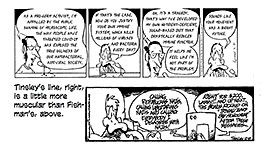
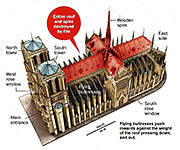
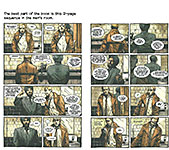
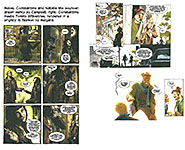
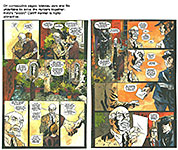
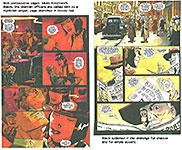
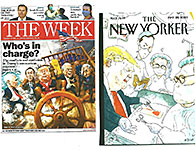
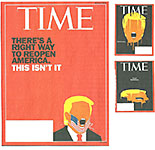





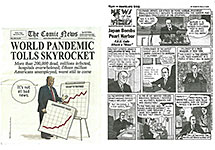
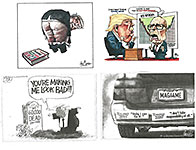
1.jpg)
2.jpg)
3.jpg)
4.jpg)
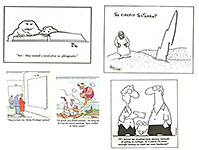
5.jpg)
6.jpg)
7.jpg)
8.jpg)
9.jpg)
10.jpg)
11.jpg)
12.jpg)
13.jpg)
14.jpg)
1.jpg)
2.jpg)
3.jpg)
4.jpg)
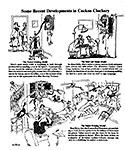
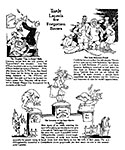
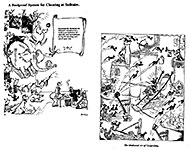
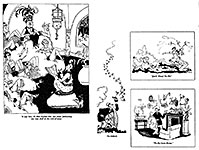
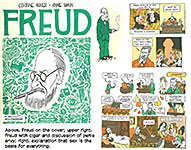
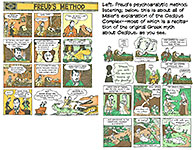
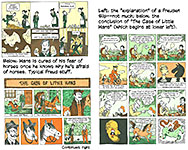
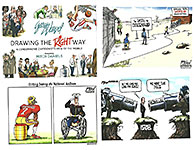
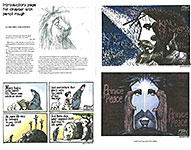
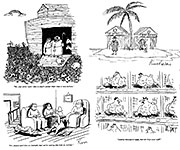
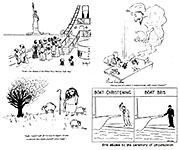
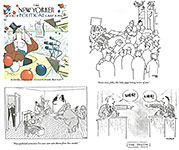
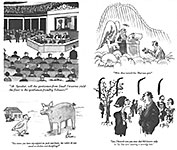
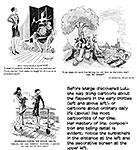
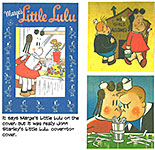

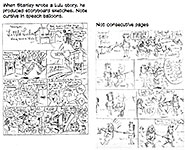
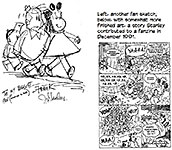
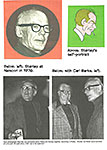
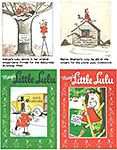
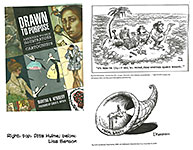
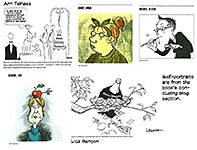
16.jpg)
16a.jpg)
16b.jpg)
